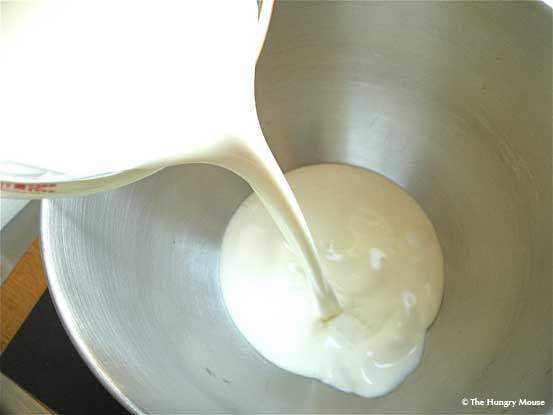The last of these was recently utilized by Irish geographer Finbar McCormick, who was interested in fleshing out our knowledge of how early human societies (in Mesopotamia, Egypt, India, and Europe) used dairy products. While this may sound like a rather esoteric research question, the results of the study have surprisingly broad implications: They help shed light on which groups of people developed particular types of dairying techniques and products, and which members of society were given access to dairy foods. This information, in turn, can be used to improve our knowledge of early religions, social hierarchies, health, and even the extent to which different countries interacted with each other.
Sheep, cows, and goats were domesticated many millennia ago (as long as 11,000, 10,5000, and 8,000 years ago, respectively). Documentary evidence for dairying, however, only dates to ~3,000 years ago--a fact that likely reflects a lack of historical evidence rather than a lack of actual dairying activity. According to McCormick, ancient sources can be difficult to interpret as a result of confusing or nonspecific wording. For example, there may be a single generic term for 'cheese' that fails to provide any information on whether it is soft or hard. This level of detail, however, is useful for understanding the amount of time and effort that would have been required for its creation, as well as guessing how and by whom might have been consumed.
 |
| Image courtesy of Hensons Cheese and Deli |
Milk--and, indeed, cattle in general--seems to have been much more important in Vedic India than in the Fertile Crescent. As a result, cow imagery is liberally sprinkled through poems and hymns, and one Vedic text provides a list of the many different dairy products that could be obtained from a cow: milk (both fresh and boiled), cream, curds, sour cream, curdled milk, butter, ghee, clotted curds, and clotted whey. In addition to being consumed, milk products were also used liberally in religious ceremonies; among other things, ghee was a utilized as a fuel that could 'invigorate' the fires burning on altars.
 |
| Ghee (image courtesy of the Chopra Center) |
Milk products appear to have had very little, if any, religious significance in mainland Europe. However, early documents suggest that dairy was recognized as being highly nutritious--though milk from sheep and goats was vastly preferred to that of cows. Despite this, the wording of several Roman texts suggests that excessive dairy consumption was considered uncivilized and barbaric. This seems to stem from negative feelings towards nomadic tribes that preferred keeping herds to engaging in agriculture. In Ireland, however, dairy could be a status symbol; while skimmed milk was a 'penitential' food, 'high-status' individuals could be found eating butter made from churned cream.
 |
| Cream (image courtesy of The Hungry Mouse, who also provides an excellent butter-making tutorial). |
Though there is little evidence that dairy had widespread mystical use or meaning in early Britain and Ireland, there have been some intriguing discoveries that still require explanation. From at least the early Iron Age (4th century BC), small pots of butter were left in wetlands in both Ireland and Scotland. Although this practice become increasingly uncommon after the Middle Ages, some deposits were dated to as recently as the 18th century. This 'heathenish' folk practice was even incorporated into Christian worship in some areas, though it was clearly frowned upon by the Church. Thus, even in societies in which cows did not have a well-known or common religious significance, dairy products were still obviously regarded as being worthy and important.
These sorts of details would be difficult to uncover using archaeological and molecular techniques, which is why McCormick believes that documentary sources can make important contributions to his field. Despite this, he also acknowledges that these types of resources may be incomplete, biased (in terms of style and scope), and inaccurate (particularly in the case of artwork, which may be intended to convey metaphor rather than fact). As a result, McCormick writes, we do still have much to learn about the significance of cows and dairy products to early human cultures. It is his hope, however, that researchers can combine all three types of analytical technique to 'arrive at [a] greater understanding of the role of dairying in early societies.'
---
McCormick, F. 2012. Cows, milk and religion: the use of dairy produce in early societies. Anthropozoologica 47(2):101-113.


Nice article.i am a writer working with online custom essay writing service here all facilities will provided for the online writing services.Thank you for sharing
ReplyDelete